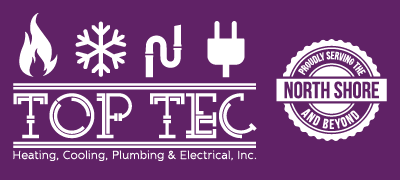
You shouldn’t have to give up comfort or spend a lot to keep your home at the right temperature during muggy weather.
But what is the right temperature, exactly? We go over advice from energy professionals so you can find the best temperature for your loved ones.
Here’s what we advise for the most energy-efficient setting for air conditioning in Libertyville.
Recommended Thermostat Settings for Summer
Most households find setting the thermostat at 72-73 degrees provides ideal comfort. However, if there’s a sizeable difference between your indoor and outdoor warmth, your utility costs will be higher.
These are our suggestions based on the U.S. Department of Energy (DOE) and ENERGY STAR®.
While at home: 78 degrees. While that appears hot, there are methods you can keep your residence refreshing without having the AC on constantly.
Keeping windows and curtains closed during the day keeps cool air where it needs to be—within your home. Some window treatments, like honeycomb shades or plantation shutters, are designed to give more insulation and better energy conservation.
If you have ceiling fans in your house, the DOE says you can move thermostat settings about 4 degrees warmer without giving up comfort. That’s due to the fact they cool by a windchill effect. As they cool people, not spaces, shut them off when you exit a room.
If 78 degrees still seems too uncomfortable on the surface, try running an experiment for a week or so. Start by upping your thermostat to 78 degrees while you’re home. Then, steadily turn it down while adhering to the ideas above. You could be surprised at how comfortable you feel at a hotter temperature setting.
While away: 88 degrees. There’s no need to keep the AC on all day while your house is empty. Turning the temperature 7–10 degrees higher can save you as much as 5–15% on your AC bills, according to the DOE.
When you come home, don’t be tempted to switch your thermostat colder than 78 to cool your home more quickly. This isn’t productive and usually produces a higher cooling expense.
A programmable thermostat is a helpful method to keep your settings controlled, but it requires setting programs. If you don’t utilize programs, you run the risk of forgetting to raise the set temperature when you leave.
If you want a convenient resolution, consider getting a smart thermostat. This thermostat works with with your phone, so it is aware when you’re at your residence and when you’re out. Then it instinctively adjusts temperature settings for the biggest savings. How much exactly? Usually $180 yearly on heating and cooling, according to ENERGY STAR.
Another perk of using a smart thermostat? You can use your phone to keep an eye on and change temperature settings from nearly anywhere.
While sleeping: Around 70 degrees. While ENERGY STAR recommends 82 degrees, that could be unbearable for many families. Many people sleep better when their bedroom is chilled, so that’s why the National Sleep Foundation advises 60–67 degrees. But that may be too cool, based on your PJ and blanket preference.
We recommend using an equivalent test over a week, moving your thermostat higher and steadily turning it down to pinpoint the ideal temperature for your residence. On pleasant nights, you may discover keeping windows open at night and using a ceiling fan is a superior solution than using the air conditioning.
More Ways to Use Less Energy This Summer
There are additional approaches you can save money on cooling bills throughout warm weather.
- Upgrade to an energy-efficient AC system. Central air conditioners only last about 12–15 years and lose efficiency as they age. An upgraded air conditioner can keep your residence comfier while keeping utility costs low.
- Book yearly air conditioner tune-ups. Annual air conditioner maintenance keeps your equipment operating properly and could help it work more efficiently. It could also help extend its life cycle, since it enables pros to find little issues before they lead to a major meltdown.
- Change air filters frequently. Read manufacturer instructions for switching your air filter. A dirty filter can lead to your system short cycling, or switch on and off too frequently, and drive up your electricity.
- Inspect attic insulation levels. Nearly 90% of residences in the United States don’t have adequate insulation, according to the Insulation Institute. Many southern climates need 13–14” of attic insulation, while northern climates require 16–18”.
- Have your ductwork checked. Ductwork that has come apart over time can leak cold air into your attic, walls or crawl space. This can lead to big comfort issues in your home, such as hot and cold spots.
- Seal holes, doors and windows. Keep humid air in its place by closing holes. You can also caulk or weather strip doors to trap more cool air inside.
Conserve More Energy During Warm Weather with TopTec
If you need to use less energy during hot weather, our TopTec professionals can help. Reach us at 847-362-0262 or contact us online for extra details about our energy-saving cooling options.
